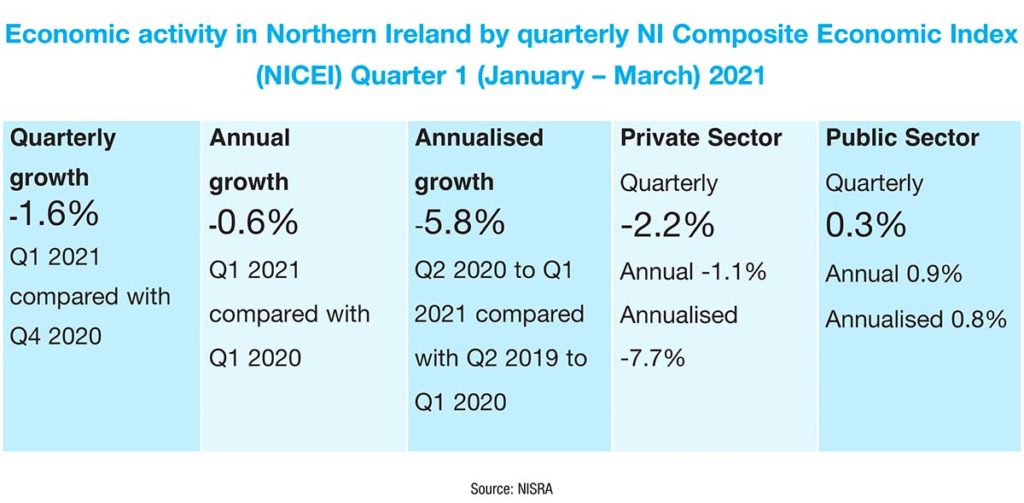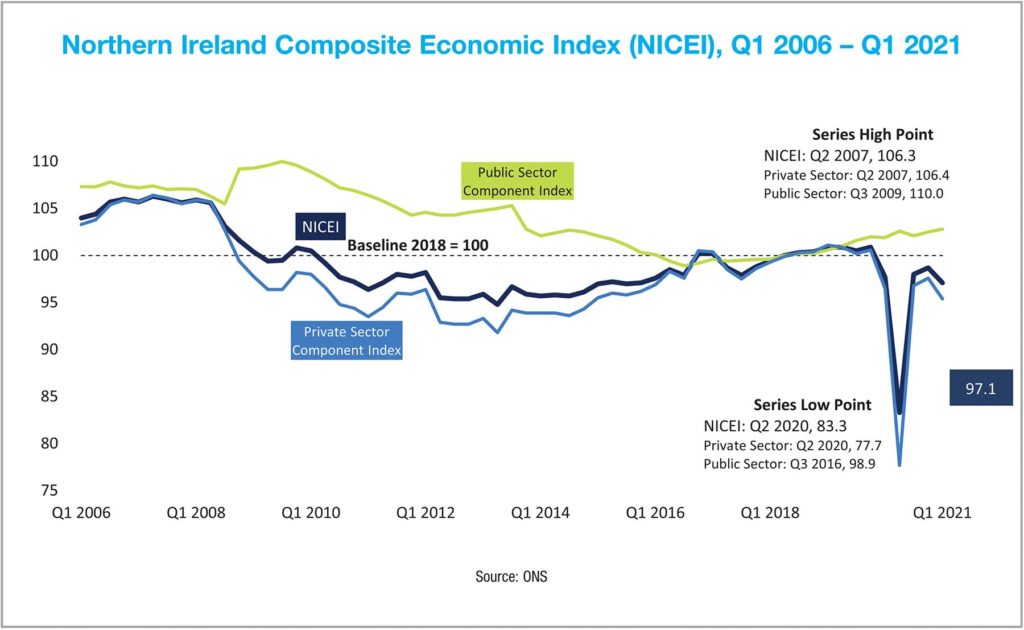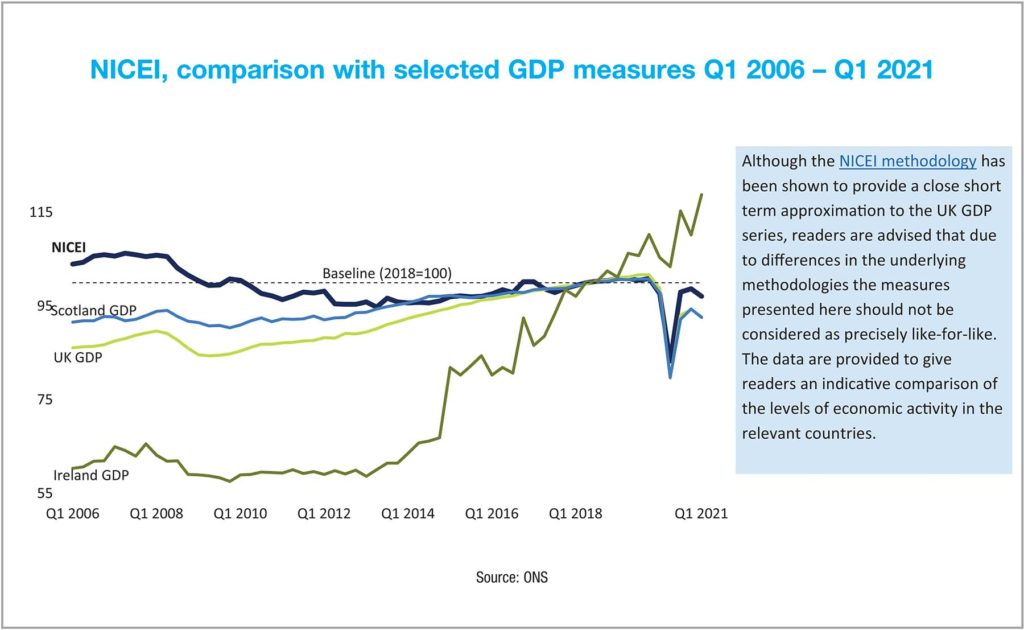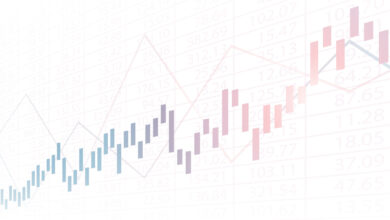Pre-pandemic return restricted
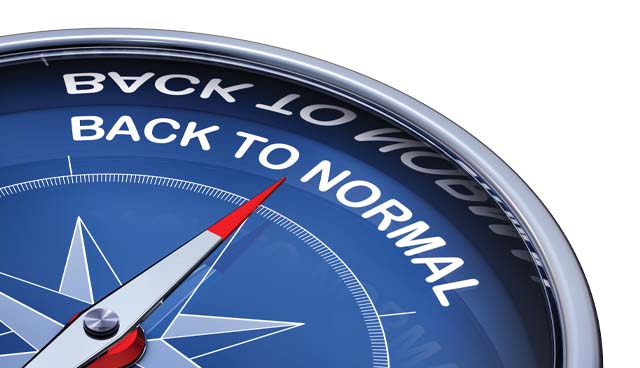
While the reopening of further sectors of the economy is expected to generate a significant uplift in economic output for the second half of 2021, Northern Ireland’s economy appears to be still some years away from a return to pre-pandemic levels.
Northern Ireland lost an estimated £6.1 billion in GVA terms between March 2020 and March 2021, the equivalent to £100 million per week of lost economic output.
While many advanced countries across the world are now experiencing strong economic recovery and have closed the gap with pre-pandemic levels in the first half of 2021, the recovery of Northern Ireland’s economy is expected to be much slower, with major risks still identified.
Despite evident exceptional economic consequences of the pandemic for the economy, the easing of restrictions and subsequent growth in output of customer-facing services have led to optimism for steady growth the second quarters of 2021 and into 2022, however there is a recognition that it could take years for Northern Ireland’s economy to even attain pre-pandemic levels of output and employment.
It is estimated that over 10,000 businesses in Northern Ireland were either closed or impacted by restrictions from 26 December 2020 to May 2021. At the start of 2021, the UK was adjudged to have the sixth strictest lockdown in the world and the second harshest in Europe.
Northern Ireland’s GDP is projected to have decreased by roughly 25 per cent below pre-pandemic levels of £48.9 billion per annum at the height of lockdown in spring 2020, however estimates over the whole of 2020 are for a 10 per cent decrease over the year.
During Q1 of 2021, real term economic output was down 1.6 per cent over the quarter. Northern Ireland’s services sector is the largest sector of the economy and output of services was significantly lower than pre-Covid-19 levels in the first quarter. Output in the production sector was only slightly below pre-pandemic levels for the first three months of 2021 but construction output for Q1 was 5.3 per cent below the last quarter of 2020, when recovery looked to have been back on track before the reintroduction of more stringent restrictions.
Northern Ireland’s economy can expect to experience greater levels of recovery in forthcoming data as renewed levels of activity in retail and recreation, alongside the reopening of all non-essential retail start to factor into statistics. While other global economies have experienced a significant uptick in consumer spending as a result of pent-up demand, on 6 August 2021, movement within retail and recreation in Northern Ireland was still 3 per cent below normal levels. It is expected that the narrative is similar for footfall in towns and cities.
Labour market
Northern Ireland’s labour market has, to some degree, been shielded from the worst impacts of the pandemic due to UK Government and Northern Ireland Executive supports. However, these supports have not been able to prevent dramatic shifts in the shape of the labour market. Over 2020, Northern Ireland’s claimant count doubled to almost 60,000 people. This number has been gradually reducing in 2021.
HMRC data shows that some 44,000 workers in Northern Ireland were furloughed at the end of June 2021. The reopening of the economy generated a reduction in the number of people on furlough support. Some 50,000 people were taken off furlough between 30 April 2021 and 30 June 2021 (down from 92,900 to 44,000), many of whom are in the retail and hospitality sectors. Around 53,000 self-employed people claimed the fourth SEISS grant up to 6 June 2021, down from 78,000 for the first grant up to 31 July 2020.
With CJRS and SEISS set to end on 30 September 2021, a serious risk of a further rise in unemployment remains. Despite the easing of restrictions, thousands of customer-facing industries still have workers furloughed. Additionally, sectors such as manufacturing continue to recognise disruption from lockdown and are experiencing a slower unfurloughing process.
Despite the risk to jobs, the Department for the Economy has published analysis showing online job postings in July 2021 were 12 per cent higher than the three-year average and 68 per cent higher than July 2020. However, July 2021’s figures are a 13 per cent decrease on postings in June 2021.
Lasting impacts
While many sectors of the economy have been boosted by the reopening, there are lasting impacts on industry from the pandemic. Prior to the pandemic, the volume of online retail sales in Northern Ireland had risen to 19 per cent but by 2020, following the outbreak of Covid-19, that figure had risen to 28 per cent.
Additionally, research by Queen’s University Belfast (QUB) highlights that significant progress had been made in the adoption and implementation of digital technologies among Northern Ireland’s small- and medium-sized enterprises (SMEs), as a result of restrictions on face-to-face business operations.
Risks
While SMEs have sought to adapt to the pandemic, significant risks still exist even with the lifting of restrictions. QUB research found that the effect of Covid-19 was more severe for small- and medium-sized enterprises than larger businesses. According to the research, higher proportions of SMEs were reporting very limited cash reserves as well as low confidence in survival in the near future.
According to the Centre for Economics and Business Research (CEBR), Northern Ireland firms have borrowed over £2 billion in government loan schemes since Covid-19 struck and some sectors face more of a burden of debt repayments than others.
Research from the Ulster University Economic Policy Centre (UUEPC) published in March 2021 highlights the disparity of the impact of the pandemic across the labour market. Among the findings was that the self-employed, young people and females have been disproportionately affected.
Recovery
Northern Ireland’s last economic strategy was published in 2012. In May 2021, the Department for the Economy published an economic vision for the next decade in Northern Ireland. The
A 10X Economy was not the costed action plan that many had hoped for, instead it offered a high-level vision of the sectors of the Northern Ireland economy that could lead the way in economic recover post-pandemic. Prior to this, the then Minister for the Economy had launched the Economic Recovery Action Plan, described as the “blueprint to rebuild a stronger economy in Northern Ireland”. £275.8 million for resource funding and £11 million in capital funding was agreed by the Executive for the recovery plan. The Department had previously stated that £290 million (including the cost of delivery of the High Street Stimulus Scheme) would be required in 2021/22 to deliver the action plan.
Alongside the Economic Recovery Action Plan and the 10X Economy, the Department has also published a Tourism Recovery Action Plan and is currently consulting on a new Skills Strategy and Energy Strategy, both of which are to be published later this year.
Discernibly, central to the Department’s ambitions for economic recovery is a desire to boost consumer confidence and spending. Northern Ireland’s median household income sits 3.25 per cent behind the UK average, meaning that any increase in consumer spending is unlikely to underpin recovery to the same extent it has in the UK.
In response, the Northern Ireland Executive has unveiled a high street voucher scheme, giving every adult in Northern Ireland a £100 pre-paid card, hoping to encourage spending at retailers that have been badly affected by Covid-19 lockdowns. The hope is that the eligible public will use the money to make out-of-the-ordinary purchases, thereby producing a stimulus. However, as some economists have pointed out, with limited restrictions on how the money can be spent, use of the scheme’s funds to simply replace regular expenditure will dramatically reduce the stimulus effect of the scheme.
“According to the Centre for Economics and Business Research (CEBR), Northern Ireland firms have borrowed over £2 billion in government loan schemes since Covid-19 struck and some sectors face more of a burden of debt repayments than others.”
While much must play out before a full assessment of the state of recovery of the Northern Ireland economy can be completed, not least the ending of labour market supports, impact of economic investment and the UK’s upcoming Spending Review, the fulfilment of a full recovery remains some way off. The UUEPC forecasts that the pre-Covid GVA levels will not be reached until mid-2023, while employment will take until 2024. EY also identifies 2023 as a date for recovery to 2019 output levels and 2024 to 2019 employment levels. More optimistically, however, Danske Bank expects economic activity to return to its pre-pandemic levels in the first half of 2022.
UK economy
The UK economy’s substantial growth (close to 5 per cent) in the second quarter of 2021 masks the lag in economic performance in the UK when compared to other advanced economies.
August’s figures are representative of an easing of restrictions and a correlated uptick in consumer spending but largely fail to reflect an expected slowdown in July due to the spread of the delta variant.
Consumer spending rose by 7.3 per cent in the second quarter, underpinning the growth, however, business investment also increased by 2.4 per cent.
The 4.8 per cent growth for the second quarter is the latest quarter-on-quarter growth, meaning the UK economy has recovered much of the ground lost to the pandemic over the past two years. The growth rate for the second quarter of 2021 was the fastest among G7 countries but the UK’s overall economic performance means that it still trails behind, with output continuing to perform below pre-pandemic levels. For instance, GDP was still 4.4 per cent below the pre-pandemic peak of the Q4 2019.
UK Chancellor Rishi Sunak said that August’s figures were evidence the UK economy was “bouncing back” but many economists believe that a rise of Covid-19 cases and the associated necessity for more people to isolate may see recovery stall.
While the full impact of any obstruction to recovery has yet to be assessed, economists estimate that the UK economy will see a return to its pre-pandemic scale by the end of the year.

